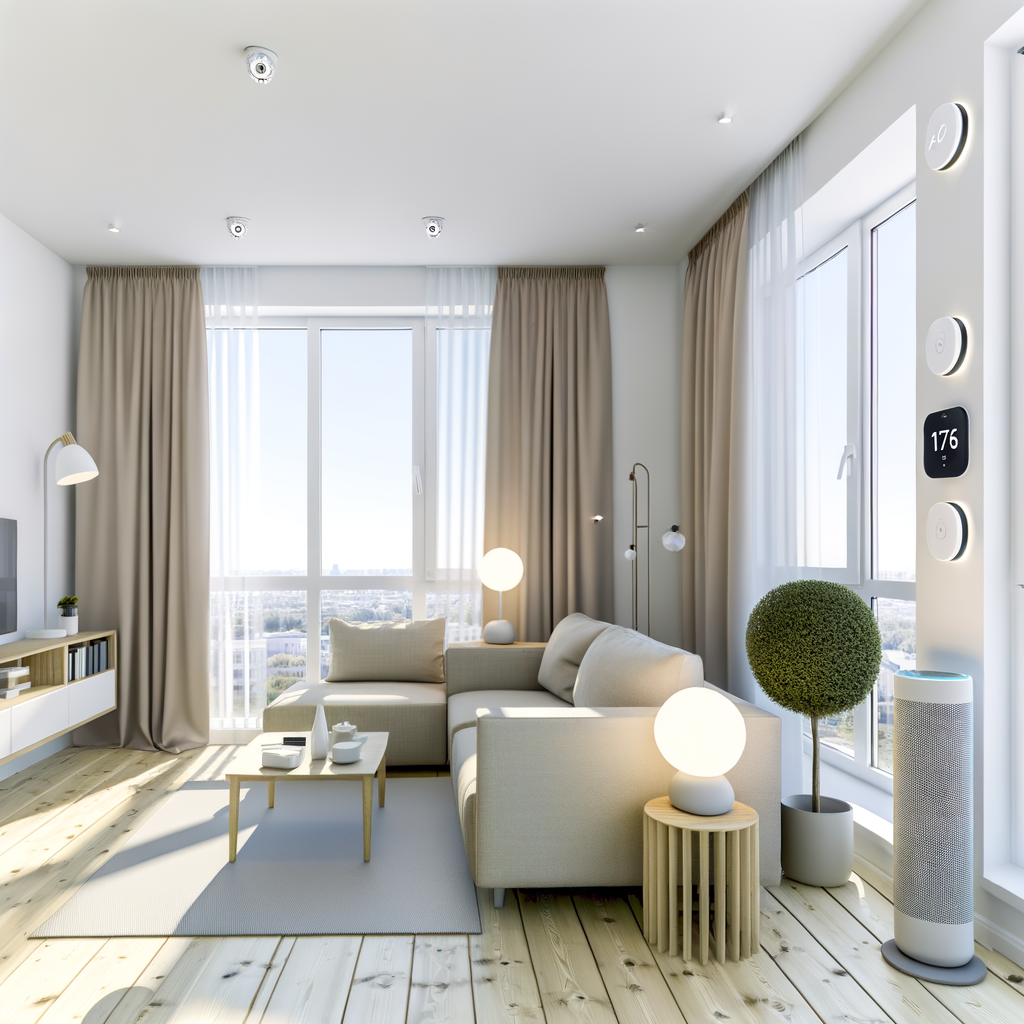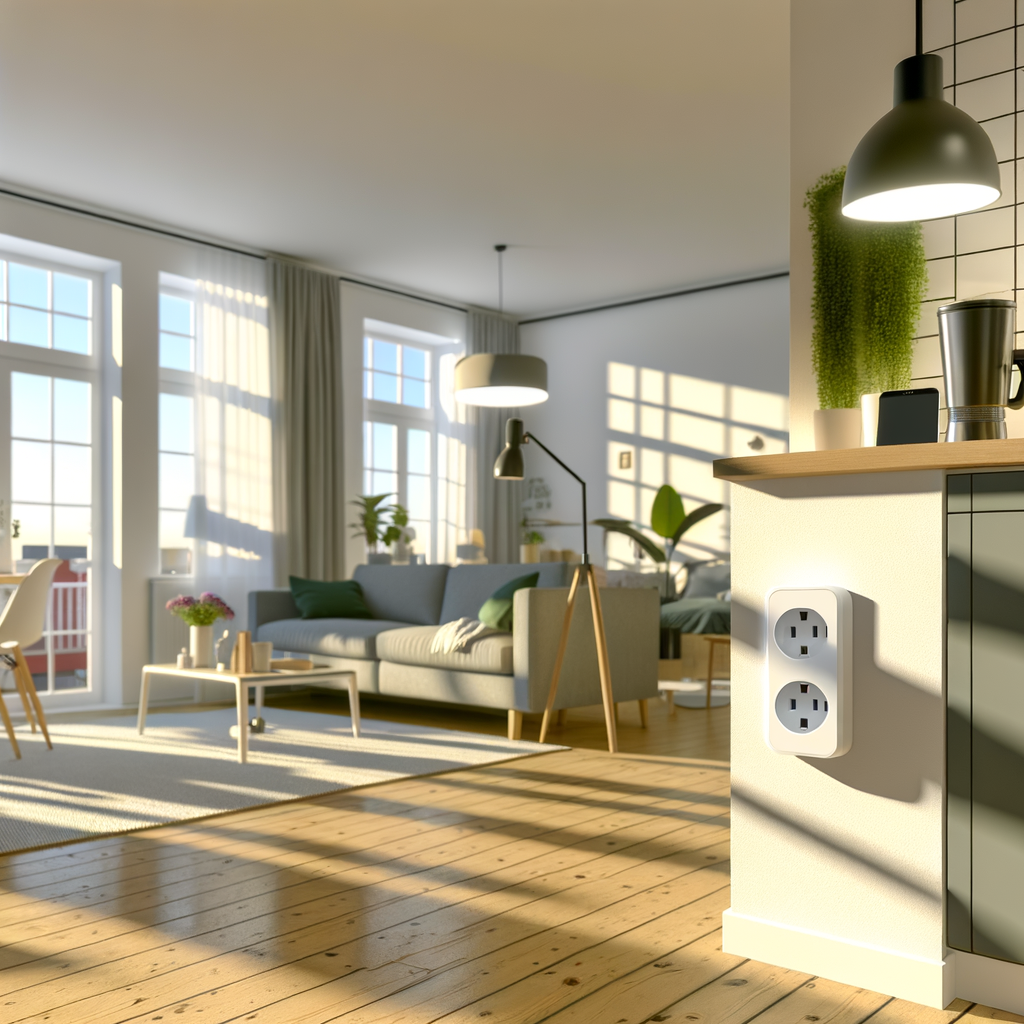How to Turn Your Rental into a Smart, Energy-Efficient Home—Without Drilling a Single Hole
Living in a rental doesn’t mean you have to settle for high utility bills and outdated tech. With today’s smart gadgets, you can dramatically improve your apartment or rented house’s energy efficiency—without making any permanent changes or risking your security deposit. This guide will walk you through smart, energy-saving upgrades that require zero drilling and leave your landlord happy.
Why Go Smart and Energy-Efficient in a Rental?
Renters often face unique challenges: strict lease agreements, outdated appliances, and little control over insulation or utilities. However, adopting a smart and energy-efficient lifestyle benefits both your wallet and the planet. Lowering your energy consumption:
- Reduces monthly utility bills
- Creates a more comfortable living environment
- Lowers your environmental footprint
- Adds convenience through automation
The best part? You can make most upgrades yourself—and take them when you move.
Getting Started: Assessing Your Space and Needs
Take Stock of Your Current Situation
- Check insulation: Look for drafty windows, doors, and thin curtains.
- Identify energy hogs: Old appliances, incandescent bulbs, and uninsulated areas are common culprits.
- Review your lease: Understand what modifications are permitted so you don’t violate your rental agreement.
Set Your Priorities
- Is your main goal saving money, convenience, or adding security?
- Do you want to automate your lighting, climate, or appliances?
- How much are you comfortable investing in upgrades?
No-Hole, No-Drill Smart Upgrades for Renters
1. Smart Lighting—Easy, Plug-and-Play Solutions
Lighting is one of the easiest areas to make smart and energy-efficient. You don’t need to rewire or drill a thing—just swap out bulbs or use smart plugs.
- Wi-Fi Smart LED Bulbs: These screw into existing sockets and can be controlled via phone apps or voice assistants like Alexa or Google Assistant. Program schedules or dim lights without the need for physical switches.
- Smart Plugs: Plug lamps into these for scheduling or remote controls. Great for renters with fixed light fixtures they can’t replace outright.
- Motion Sensor Nightlights: Battery-powered options for hallways or bathrooms add convenience and use minimal energy.
2. Smart Thermostats for Renters
Heating and cooling contribute the most to monthly energy bills. While some thermostats require wiring, many now have simple installation and removal—no drilling necessary.
- Plug-in Smart Thermostats: Some room heaters and ACs work with plug-in smart thermostats that regulate temperature based on your preferences.
- Portable Smart Thermostats: Freestanding sensors that help monitor room conditions for more efficient heating and cooling control.
Tip: Always check with your landlord before swapping thermostats connected to a central HVAC system. Portable options avoid this issue entirely.
3. Efficient Window Treatments—All Stick, No Drill
Drafty windows can waste a lot of energy. Instead of drilling to hang heavy curtains:
- Thermal Insulating Curtains: Use tension rods (no hardware needed) to install blackout or thermal curtains to keep heat in during winter and out in summer.
- Removable Window Film: Apply static-cling or peel-off window film to improve insulation and privacy. Removes easily and leaves no residue.
4. Smart Power Strips and Energy Monitoring
Vampire energy (power drawn by devices in standby mode) can quietly inflate your electric bill. Combat this with:
- Wi-Fi Smart Plugs & Power Strips: Let you cut power to devices remotely or schedule off-times for TVs, game consoles, and more.
- Energy Monitors: Plug-in devices measure how much electricity individual appliances are using. Identify the worst offenders and adjust accordingly.
5. Portable, Plug-In Appliances
If you’re stuck with an old, inefficient refrigerator or window AC, consider these renter-friendly alternatives:
- Energy-Efficient Space Heaters: Modern, ceramic models with timers and adjustable thermostats can save money and avoid over-heating unused rooms.
- Portable Air Conditioners/Evaporative Coolers: Choose models designed for energy efficiency with programmable timers.
- Countertop Dishwashers: Use less energy and water than hand-washing or large built-in units—plus, they require no permanent installation.
6. Smart Sensors: Automation and Safety Upgrades
Smart sensors can turn off lights, alert you to open windows, or let you know if you’ve left an appliance running.
- Contact Sensors: Attach with adhesive strips to windows or doors, then get alerts when they’re open or closed via your smartphone.
- Motion Sensors: Wireless, battery-powered units can automate entry lights or enhance security—no tools required.
- Water Leak Sensors: Place around sinks, toilets, or washing machines. Get instant alerts for leaks to prevent expensive property damage (your landlord will thank you!).
7. Smart Home Ecosystems (without the Hardwiring)
Sync your smart gadgets together for seamless control. Focus on:
- Wi-Fi Hubs: Devices like Amazon Echo or Google Nest Hub integrate multiple gadgets and use voice commands for quick adjustments.
- Multi-Device Control: Many brands now work across platforms; look for compatibility before you buy new devices.
Energy-Saving Habits to Supercharge Your Smart Home
- Automate schedules: Set lights and devices to turn off when you’re away or asleep.
- Monitor usage: Use smart plugs and energy monitors to identify energy drains, then adjust behaviors.
- Layer smart controls: Set up sensors to trigger lights or climate controls based on movement or occupancy.
- Regularly update software: Ensure devices run the latest firmware for best performance and security.
No-Hole, Eco-Friendly Tricks for Insulation and Comfort
Door Draft Stoppers
- Under-door draft guards slide into place—no adhesive or screws.
- Removable weatherstripping uses gentle adhesive to seal gaps (ask your landlord first, just in case).
Rug Placement
- Placing rugs over bare floors reduces heat loss in winter and helps with noise insulation—no tools required!
Portable Humidifiers and Fans
- Maintain comfortable humidity and airflow with plug-in devices for targeted, energy-efficient comfort.
Tips for Getting Landlord Approval for Smart Upgrades
For some changes—like installing a plug-in smart thermostat—it’s best to notify your landlord. Position your request as a win-win:
- Emphasize energy savings: Lower utility bills are good for you and can increase the property’s value.
- Offer to share energy reports: Demonstrate reduced usage as proof your upgrades are beneficial.
- Assure removability: Highlight that your chosen devices are all non-permanent and will be removed when you move out.
- Get approvals in writing: Protect yourself from disputes later by keeping landlord permissions documented.
Moving Out: How to Take Your Smart Home with You
Most smart upgrades listed here are portable. Before moving:
- Restore to original condition: Replace standard bulbs or thermostats if you swapped them out.
- Remove adhesives carefully: Use gentle tools and cleaners to avoid leftover residue.
- Reset devices: Log out and factory reset each gadget before setting them up in your new place




